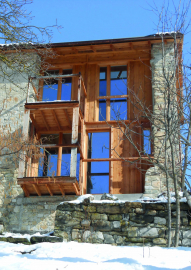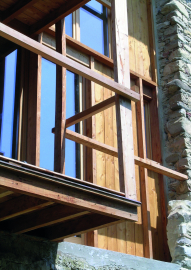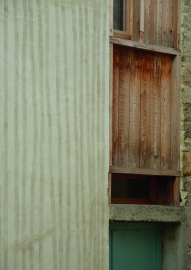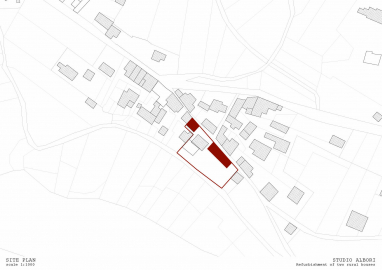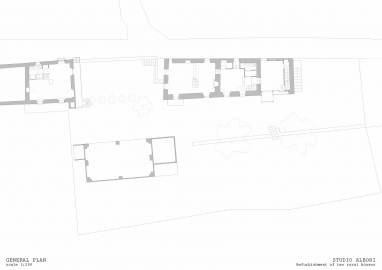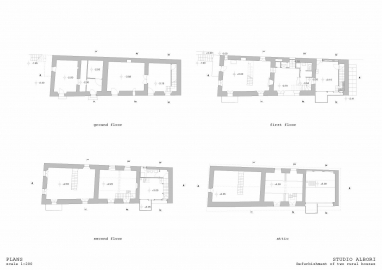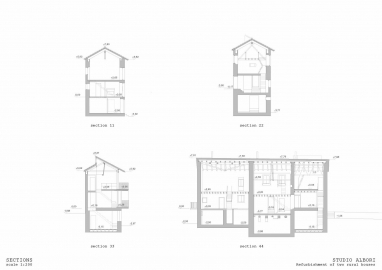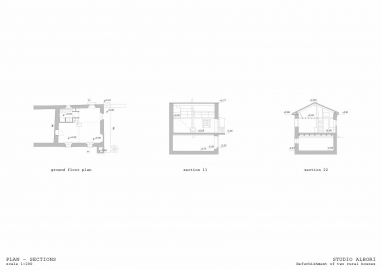Refurbishment of two rural houses
A conversion of two rural buldings into holiday houses, designed to be used as a whole or as four independent dwellings, and to be partially constructed by a contractor and partially self-built by the owners.
Two houses in stone and brick, built with subsequent extensions. The smaller needed few changes to become habitable again. In the larger house, the changes to the existing walls were limited as far as possible (two new interior doors); the outside walls have been lined with insulation in wood fibre and larch planks, except for the ground floor, which has a seasonal use. All the new indoor partitions (horizontal and vertical) are in wood. The opening of the hayloft is filled with a large solar window which integrates with the wood-fired heating and solar panels (thermal and photovoltaic). The contractor carried out the principal structural works, all the rest has been done bit by bit by the owners, with some manual contributions by ourselves.
The project doesn't have a proper “concept” and doesn’t change at all the relations that the buildings already had with their context. The main features of the project have been to respond to the two basic needs of the owners: the possibility to use the houses as a whole or as four different dwellings (one for the parents and one for each of the children); and to self-build most of the interventions, which meant employing very elementary techniques, over quite a long period.
For the rest, it concerned to take advantage of all what already existed, with its characters and its dimensions.
The choice of building almost entirely with wood came both from the wish to use a renewable, even harvestable, material, for ecological reasons, and from the need to employ very simple tecnologies.
We also used a lot of second-hand components: staircases, stoves, roof tiles, etc…
We agreed from the beginning to provide the houses with frugal facilities, choosing to heat them exclusively with biomass, and to selfproduce eletricity and hot water on the spot.
The photos can't show the solar panels because, for the sloping ground, they are completely invisible, if not from an elicopter or a drone.


